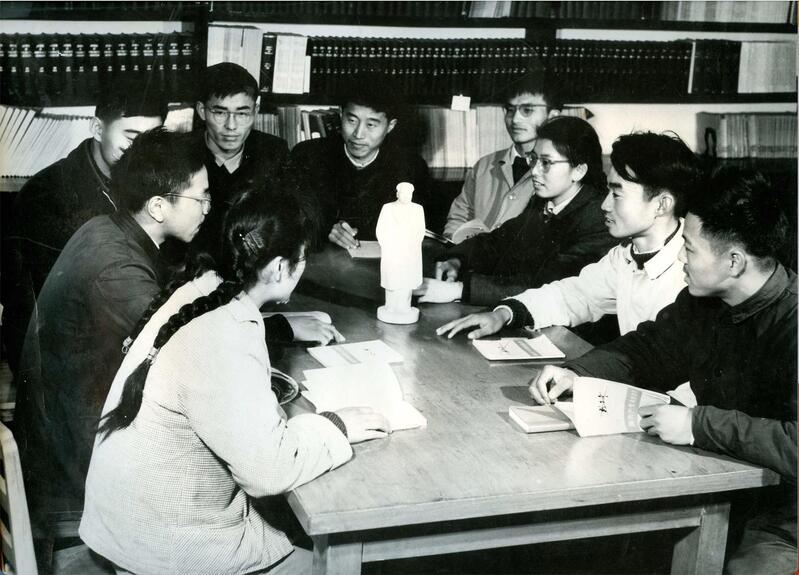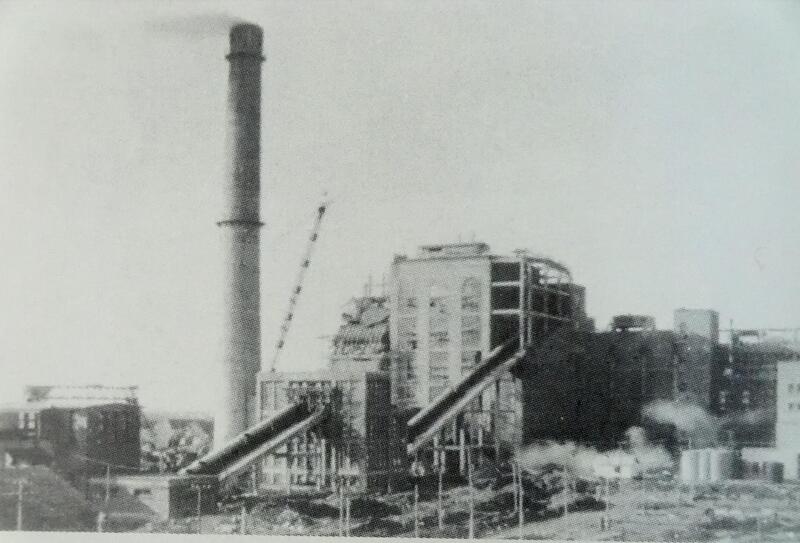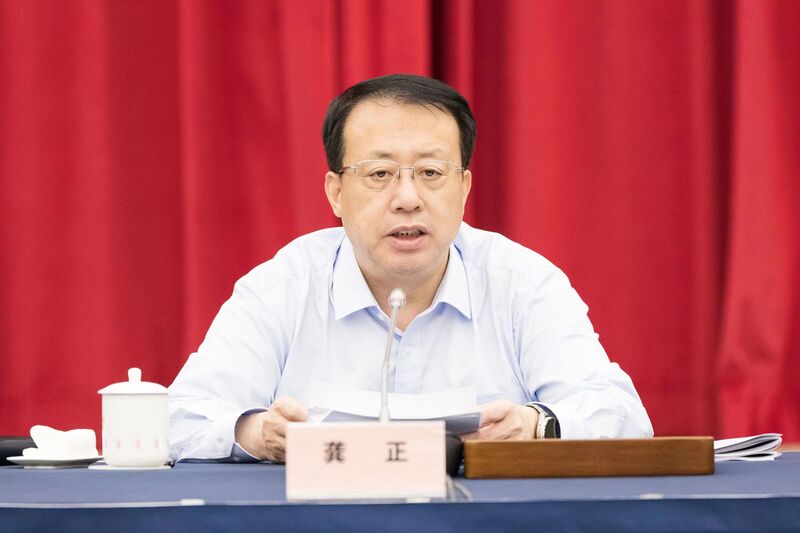Shanghai's Solution | Looking Back at Shanghai Research: A Satellite City with Narrow Urban Space and Heavy Industrial Construction Tasks | Shanghai | Space
In order to solve the problem of urban development space, Shanghai built five satellite cities in the suburbs in the late 1950s, which better met the needs of urban development at that time, especially the development of heavy industry. During the process, builders explore and solve the three core issues of whether to build a satellite city, where to build it, and how to build it through investigation and field exploration, making the planning and layout of the satellite city more reasonable and appropriate, playing a key role in the smooth progress of the construction project.
First question: Should Shanghai build a satellite city?
In 1956, Chairman Mao Zedong instructed that Shanghai had a promising future and needed to develop. Subsequently, the Shanghai Municipal Party Committee proposed the industrial construction policy of "full utilization and reasonable development". The pace of urban development in Shanghai has accelerated, and a large number of construction projects have been launched. The narrow urban space has become a bottleneck and bottleneck that restricts development.
At this point, as an important means to solve the spatial problems of large-scale urban development, satellite cities have begun to enter the sight of Shanghai's urban builders. The Soviet Union's "Sixth Five Year Plan" proposed a plan to build satellite cities around large cities, and first carried out satellite city construction around Moscow. So, should Shanghai emulate foreign experiences and carry out satellite city construction?
The investigation found that at that time, industrial enterprises in Shanghai were generally small in scale and mainly focused on light industry, scattered throughout the city. However, according to the policy of "actively transforming and developing Shanghai's industry in a reasonable manner, with a focus on developing heavy industry" determined by the First Shanghai Congress of the Communist Party of China, Shanghai's industry should develop towards heavy industry, emphasizing the focus on electromechanical, shipbuilding, steel and other industries, especially the development of large-scale and complete sets of electromechanical equipment that the country needs.
Developing these industries requires extensive industrial construction land, which can only move beyond the urban area and towards broader suburban areas. The construction of satellite cities is an important way to achieve this transfer. Taking the "Four Great Kings" in the Minhang Satellite City built afterwards as an example, there are four large factories: Shanghai Steam Turbine Factory, Shanghai Electric Motor Factory, Shanghai Boiler Factory, and Shanghai Heavy Machinery Factory. Among them, there is a factory covering an area of one square kilometer. The total area of the four factories is larger than that of Huangpu District in 1956.

Through investigation, the builders also found that with the increasing stability of people's lives after the founding of New China, the population of Shanghai grew rapidly in the 1950s. The urban population increased from 4.18 million in 1950 to 6.09 million in 1957, and the population density per square kilometer in the urban area exceeded 50000 people. Shanghai was already overwhelmed. At the same time, the central urban area of Shanghai is limited in space, and due to historical reasons, it has caused problems such as unreasonable layout and poor infrastructure, resulting in high expansion costs and difficulties. The construction of heavy industry not only requires a large amount of land, but also a large amount of labor. This means that, while minimizing the total population, population density can only be reduced through population evacuation, and satellite cities are an effective means of evacuating urban populations.
Because it can effectively solve the two major problems of industrial land and population evacuation, developing and building satellite cities in the suburbs has become a good choice. In September 1956, the Municipal Planning and Building Management Bureau formulated the draft of Shanghai's 1956-1967 short-term plan, proposing the idea of preparing to open up some satellite cities. One month later, Deputy Mayor Cao Diqiu presided over the Mayor's Office Meeting, which specifically discussed the draft plan and decided to build satellite towns during the "Second Five Year Plan" period. At the Second Congress of the First Shanghai Municipal Congress of the Communist Party of China held at the end of 1957, it was officially decided to establish satellite towns around Shanghai, disperse some industrial enterprises, and reduce excessive population concentration in the urban area.
Question 2: Where is the satellite city built in Shanghai?
In 1958, the State Council divided 10 counties, including Jiading and Baoshan, which were originally under the jurisdiction of Jiangsu Province, into two batches and transferred them to Shanghai, making it possible for Shanghai to realize the idea of building a satellite city. At the same time, the second question of satellite city construction is also presented to builders - where should it be built?
The Shanghai Urban Planning Survey and Design Institute has been tasked with resolving this issue. Based on the selection principles of being as close as possible to rivers and railways, existing towns with power and water supply conditions, and a distance of 25 to 30 kilometers from the city center, more than ten towns in counties such as Shanghai, Baoshan, Jiading, Jinshan, Qingpu, and Songjiang were selected for investigation and research, with a focus on understanding the necessary conditions for building factories in these towns.
After careful investigation and thorough research, in March 1958, the Municipal Urban Planning Survey and Design Institute completed the "Survey Report on the Construction Conditions of Shanghai Satellite Towns". It is mentioned that based on the existing industrial foundation and good transportation conditions in Minhang, it is recommended to first carry out satellite city construction here.

The selected Minhang Town was under the jurisdiction of Shanghai County, Jiangsu Province in the early days of liberation and is an ancient town with a history of over 400 years. The investigation found that Minhang Town has convenient water and land transportation and has been a commercial town with salt and rice circulation in the Jiangnan region since ancient times. Due to its proximity to the Huangpu River and inherent advantages in water transportation, docks built along the river can accommodate thousands of ton ships. In addition, it is only about 30 kilometers away from the center of Shanghai, making production collaboration and management more convenient.
Meanwhile, the investigation found that Minhang Town still has a good industrial foundation. Long before the establishment of the People's Republic of China, there was a mechanical and electrical manufacturing factory in Minhang Town - General Machinery Company Minhang Manufacturing Factory. After the establishment of the People's Republic of China, according to the decision of the First Ministry of Machinery Industry, a power station equipment base was built in Minhang based on this factory. In August 1953, it was renamed "Shanghai Steam Turbine Factory".
In early 1958, the central government decided to transfer Shanghai County, where Minhang Town is located, to the jurisdiction of Shanghai City. This major decision has made it more realistic for Shanghai to build the Minhang Satellite City. During the same period, the management authority of Shanghai Steam Turbine Factory, which was originally under the central government's jurisdiction, was also delegated to Shanghai. In this way, Shanghai has the initiative to transform and expand this leading enterprise in Minhang Town, which can drive the construction of the entire Minhang Satellite City.
The construction of a satellite city in Minhang Town provides an important reference for the subsequent site selection of the satellite city. By the end of 1959, referring to the conditions and methods of selecting Minhang as the site, Shanghai had selected four towns, Wujing, Anting, Songjiang, and Jiading, to build satellite cities. The site selection and positioning work for the first batch of satellite cities in Shanghai has come to an end.
The picture shows the first thermal power plant in Shanghai, Wujing Thermal Power Plant.
Question 3: How to build a satellite city in Shanghai?

In the 1950s, when the economic foundation was relatively weak, building satellite cities was not an easy task, and greater profits had to be achieved with limited investment.
Firstly, through investigation and research, it is necessary to understand the existing conditions of each satellite city, including the natural resources and transportation situation of the satellite city's location, the existing industrial foundation and municipal facilities, and based on this, plan the direction of industrial construction according to local conditions. At the same time, it is necessary to investigate and study the industrial development layout needs of Shanghai and even the whole country, and on this basis, coordinate and arrange the functional division of each satellite city.
The survey report on the conditions for building factories in Shanghai's satellite towns mentions that the reason why it is recommended to build Minhang as a satellite city with a focus on the electromechanical industry is twofold: on the one hand, Minhang has a suitable geographical environment. In an era where land transportation was not yet developed, convenient waterway transportation was crucial for the electromechanical industry with equipment and products weighing tens or hundreds of tons. Minhang also has the foundation of the electromechanical industry, including not only the key development of Shanghai Steam Turbine Factory, but also the relocation of Shanghai Electric Motor Factory from the urban area, all of which are important foundations of Minhang's electromechanical industry.
On the other hand, after the establishment of the People's Republic of China, especially after the large-scale development and construction began, the electromechanical industry, as one of the foundations of the entire industrial system, became particularly important. There is a high demand for large-scale electromechanical equipment, especially power generation equipment, in various regions and industries. Based on the above situation, it is indeed imperative to determine the construction direction of electromechanical as the Minhang Satellite City.
When choosing the construction direction of Jiading Satellite City, careful research was also conducted. Jiading has a beautiful environment and many cultural relics such as Qiuxia Garden. It is obviously not suitable to build a satellite city like Minhang, which is mainly focused on heavy industry. Furthermore, at that time, Shanghai had planned to build multiple satellite cities and industrial zones with different industrial development directions, and the demand for the construction of industrial satellite cities was no longer as urgent. In September 1959, the Municipal Urban Planning and Design Institute formulated the "Jiading Overall Plan", which comprehensively determined the plan to combine the construction of a historical and cultural town and a scientific satellite city in Jiading.
Except for Minhang and Jiading satellite cities, the other three satellite cities have also determined their own unique development directions. The chemical industry of Wujing Satellite City, the instrumentation and textile industry of Songjiang Satellite City, and the automotive industry of Anting Satellite City, together with the electromechanical industry of Minhang Satellite City, formed an important foundation for Shanghai's industry at that time. To this day, Minhang, Anting, and others still serve as important manufacturing bases, contributing their efforts to the city of Shanghai.

The picture shows Minhang Satellite City.




